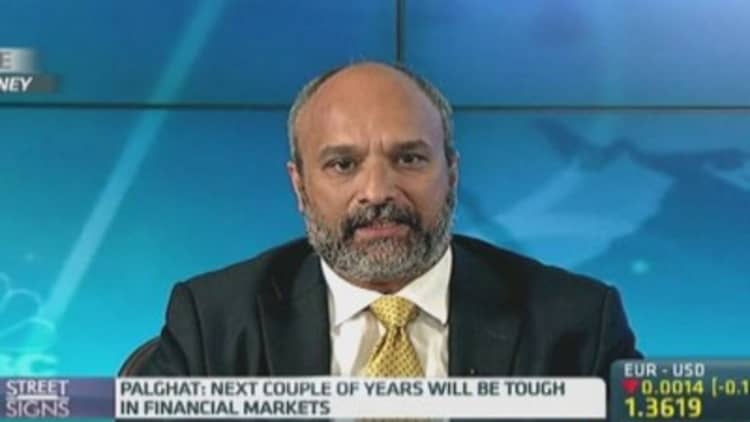The long-predicted "great rotation" out of bond investments appears to have fizzled, with funds headed back into fixed income, frustrating forecasts for higher yields.
"It's been a puzzling move since the beginning of the year" when the Federal Reserve began tapering its quantitative easing program, Bill Maldonado, chief investment officer for Asia Pacific at HSBC, said.
Analysts had widely expected interest rates would rise as the Fed began pulling back its asset purchases and as investors shifted out of bonds to seek more risk in equity markets.
Read More Why tapering didn't push up bond yields

Instead, so far this year, around $85.52 billion has flowed into bond funds, outpacing the $45.98 billion that flowed into equities over the same period, according to data from Jefferies.
The 10-year Treasury yield has been hovering around 2.5 percent, down from around 3.0 percent in January. Bond yields move inversely to prices.
A key cause may simply be that despite all the quantitative easing from Japan and the U.S. and possibly soon in Europe, "the global economy is still very subdued. It's growing well below potential," Maldonado said.
Read More Why investors keep buying expensive bonds
"It's likely we're going to be in a prolonged period of very low interest rates, below trend growth (and) low inflation, probably longer than we would have anticipated a year ago," Maldonado said. "A year ago, people thought that rates would rise in 2014. Now, we're saying maybe not until 2015. Well, what if it's 2016 or 2017," he asked. "If you construct that scenario, then I think the move in 10-year yields down is perhaps not as surprising."
Others also expect the bond rally might continue despite the Fed's tapering efforts.
Read More Are junk bonds losing their 'high-yield' status?
"The Fed is orchestrating a phenomenal exit from this unprecedented policy they've had in place for the last five years," Kumar Palghat, director at fixed income manager Kapstream Capital, told CNBC.
In January, the Fed began tapering its quantitative easing program of $85 billion monthly purchases of mortgage securities and Treasurys by cutting $10 billion from the total, and it has stepped down the purchases by another $10 billion at each meeting since then. Starting in May, monthly purchases will be $45 billion.

Read MoreAre bonds still a safe bet? It depends
Despite Treasury markets around 40-50 basis-point rally so far this year, Palghat doesn't believe the bonds are mispriced.
"The bond market might be right in saying the Fed is unwinding liquidity, but the actual rise in funds rate is going to be a couple of years away "So, the cheap money continues," he said.
—By CNBC.Com's Leslie Shaffer; Follow her on Twitter @LeslieShaffer1

